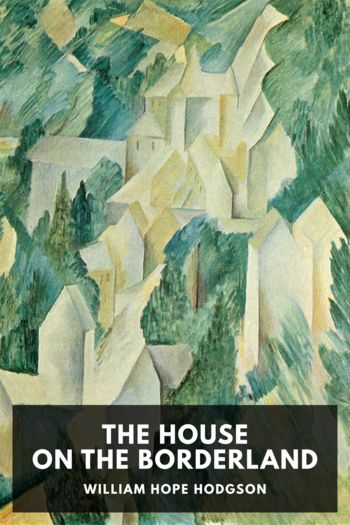Gluck by Diana Souhami (most interesting books to read .TXT) 📗

- Author: Diana Souhami
Book online «Gluck by Diana Souhami (most interesting books to read .TXT) 📗». Author Diana Souhami
Despite such diversions Gluck achieved, in old age, two paintings which redeemed her years of battling over paints and showed that her talent was intact. These she called ‘The Path to the Lough’ and ‘Rage, rage against the Dying of the Light’. The inspiration for ‘The Path’ was a landscape in Rosapenna, near Ballyclare, Northern Ireland, where Edith’s cousin Dido lived: ‘I owe you so much – you made it all possible.’ Gluck wrote to Dido in 1969:
From when you first drove us to Rosapenna and gave me such a warm welcome at Fairview, everything I have dreamed of painting in landscape became released and I therefore owe you a great debt …
She called the picture an allegory. The path is misty, winding, circuitous and uncertain, but leads ultimately to still water, calm mountains and light sky. ‘I was for the first time utterly relaxed and peaceful when it was finished’, she wrote to Nesta (14 August 1970), ‘and felt it was the first picture I had ever painted that told all of my innermost thoughts and feelings – I can die happy if that picture survives.’
The picture was 51 × 76 cm inches and she enjoyed working with her new brushes on a larger surface. She signed it in 1969. She had promised it to the Bougheys, but had difficulty in parting with it and kept it for another year. Eventually Richard Boughey, whose brother, John, Gluck had painted shortly before he was killed in 1940, collected it at 11.30 on 8 August 1970. It fitted with difficulty into the boot of his car. ‘Very sad about it going,’ Gluck noted in her diary (8 August 1970). ‘I mourned loss of picture by evening.’
Worthing Beach was the inspiration for the other outstanding picture of her old age. She and Edith used to take weekend breaks at the Beach Hotel. Room 88 on the third floor was their favourite, with its adjoining bathroom and view of the sea. Gluck spent days walking on the beach, talking to the bait diggers or sitting in the beach shelter taking notes and drawing. One cold evening in 1969, the beach was deserted.
Not only were there no people but the beach seemed scoured clean – no sea wrack, no rubbish, nothing. Then I saw in the distance this small patch of something light coloured, and when I went to look there was this dead fish’s head lying just at the edge of the sea in a small depression with the tide coming in. I couldn’t get it out of my head. The next evening – two tides later don’t forget – I went back. And the head was still there, a little more stripped and skeletal and in a hollow a little deeper; and I knew I must paint it. For me, what had seemed a symbol of decay and death had become an emblem of resurrection.6
Its eyes were eaten away and it was surrounded by lug worm casts. She took photographs and notes, had the head posted to the Chantry and began painting it with its nose pointing toward the ocean. For a title she took the recurring line from Dylan Thomas’s poem written to his dying father: ‘Rage, rage against the dying of the light’.
It is a severed head with dark sightless chasms where its eyes had been. She was painting her death, the end of her vision as an artist, the loss of love, the wasted years: ‘… now that I am old and nearing the end of this life my homeland comes clear and it comforts me’. Her theory was that this beached creature was trying to get back to the sea. Into the worm casts, the scales and torn tendons of the fish and froth of the water, she put the same delicacy of texture and detail as in her flower paintings. Nesta thought she was sick and recommended a psychiatrist. Gluck worked at the picture from 1970 until 1973:
Very depressed about the picture and how long it is taking and whether I am achieving what I want or spoiling it.
Very worried by outgoing sea bit and scrape it out. Cannot find what I want.
Again tackle sea and again fail. Vote before starting work. Stay up till 4am because of election. Wash brushes at 3am with tv in bedroom.7
Again and again she wiped out and repainted the small stretch of sea to the left of the picture. As ever she could not leave it be and declare it finished. Edith thought it a masterpiece – the best she had ever done. Gluck asked Lovett how much he thought it was worth. He said £4000, and she agreed. Miss Vye admired it as a painting, but saw cruelty and loneliness in it and hated it for the cost to domestic harmony its creation seemed to exact. It was to be Gluck’s last major picture, original, unexpected, technically superb, and with all her old flair of composition and verve.
In 1970 she repeatedly wrote to Nesta of her desire to have another exhibition and to ‘come back just sufficiently as a painter before my demise’. She made a few tentative enquiries but found herself more or less forgotten by The Fine Art Society and other London galleries and she did not





Comments (0)